Walks by the lake, refined residences, excellent food, and wine. Let's discover some of the 16 municipalities that make up the Castelli Romani, lying in the picturesque nature of the Colli Albani. Reachable a few kilometers from Rome, in an alternation of gentle slopes, along the ancient consular roads (Tuscolana or Appia). Along the coolness of Albano Lake and Nemi Lake, you will come across sumptuous buildings commissioned by popes and aristocrats, 9500 hectares of protected territory where wolves still hide and small villages full of curiosities where it is possible to drink the wine of the castles accompanied by a spartan meal in the famous fraschette.
The Roman castles took on this name in the fourteenth century, when, due to the political and economic difficulties caused by the transfer of the papal seat from Rome to Avignon, many Romans moved to the castles of some rich feudal families, who were located in these parts, over the time grew the villages and towns that we know today.
The Castelli Romani are located just a stone's throw away from the city of Rome, and if you're planning a long weekend in these beautiful towns, you cannot overlook the opportunity to spend a few days in Rome as well. By doing so, you can enjoy the remarkable advantages that come with purchasing the Visit Rome Pass: the tourist pass that offers an incredible opportunity to explore the city of Rome in an entirely new and extremely comfortable way. Discover some of the best towns that are part of the Castelli Romani.
More info on Visit Rome Pass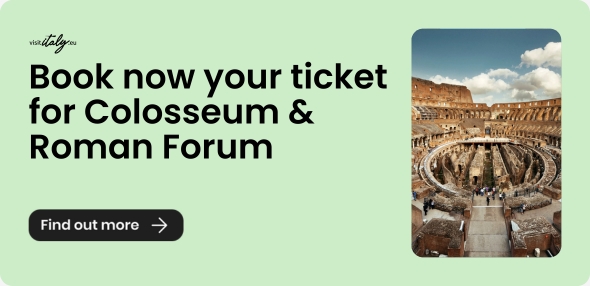
Castelli Romani in four days: before leaving

The Castelli Romani include sixteen municipalities in the area south-east of Rome, they are all part of the extended area of the Castelli Romani Park. The green lung of Rome, where you will find beautiful landscapes and leave the heat of the capital behind you along roads untouched by mass tourism.
We propose an itinerary starting from the capital. The best is to use a car, going along the consular Tuscolana road and tracing a circular route in stages around the most beautiful and interesting villages, we have chosen nine for you.
The perfect duration is four days, in which you can both explore and take relaxing breaks by the lake and at scenic spots. With the itinerary that we propose, in addition to the towns, you can pass at the foot of Monte Cavo and inside the woods of the Castelli Romani Park, describing a sort of ring and then return to Rome with the consular Appia way.
The alternative to the car is the train and for the more daring and sports lovers it is also advisable to combine train and bike, since the railway routes provide for it. The ideal starting point for the itinerary is from Rome, but coming from the south it is still possible by varying the initial stage and still making a circular route. If you also want to enjoy swimming in the lake, the best time to travel is in late spring and the summer until early autumn. Shall we go?
Listen to the podcast version of the article with Monna Lisa and Leonardo's voices
First stage: from Rome to Frascati
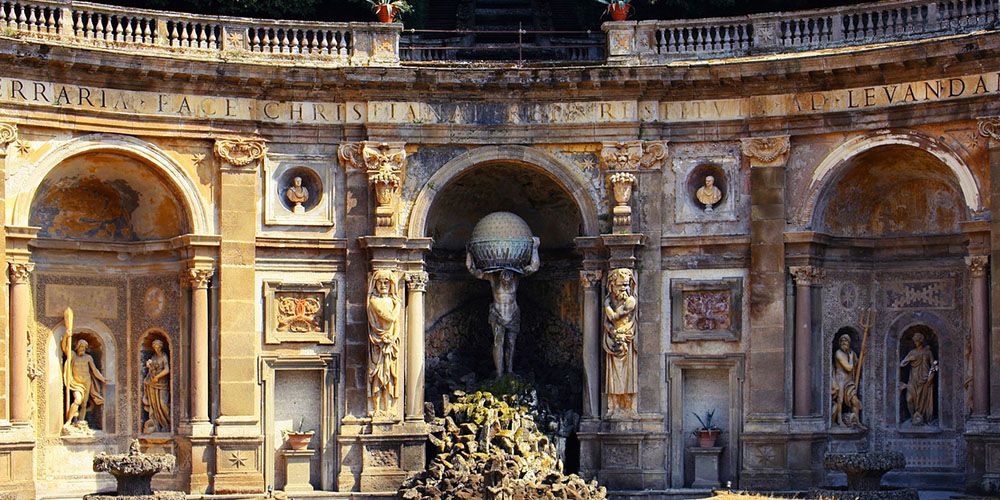
Leaving by car from Rome, 21km from the capital along the Via Tuscolana, you will gradually immerse yourself in the greenery and in the many rows of vineyards, arriving in one of the most famous places in the Castelli Romani: Frascati, 320 meters above sea level. It is from this city that the Frascati Doc takes its name, the wine praised in the Roman stornelli, much loved since the times of the ancient Romans and produced in about 900 hectares of vineyards.
As soon as you arrive in Frascati, head towards Piazza Marconi, the entrance to the historic center of the town. On one side of Piazza Marconi there is a panoramic balcony from which it is possible to have a complete view of Rome. Before entering the characteristic stone alleys of the historic center and perhaps stopping to refresh yourself in some fraschetta, we recommend that you look out at the splendid Villa Aldobrandini, the most spectacular and opulent of the Tuscolane villas (located in the area between Frascati, Grottaferrata and Monte Porzio Catone ). The wood of the villa shows one of the best examples of an Italian garden. Inside the Aldobrandini stables we find the Tuscolano museum, inaugurated in 2000 under the architectural direction of the starchitect Massimiliano Fuksas. Continuing we meet Villa Torlonia, famous for its Teatro delle Acque, a fountain with water features designed by the architect Carlo Maderno. Stretching out into Piazza San Pietro, in the heart of Frascati, you will find the cathedral of San Pietro built between the 16th and 17th centuries, an unmissable stop for art lovers, the cathedral has a facade by the sculptor Giovanni Fontana. On the same square you can also admire the fountain of Piazza San Pietro, it was donated to the city of Frascati by the same stonemasons who had worked on the church.
At this point, take a little culinary break in one of the many fraschette that the town offers. The fraschette were born towards the end of the 19th century, the peasants put a branch of vine outside the door to warn customers that the new wine was ready. At that time the innkeeper only offered wine and sometimes salami and cheese and the rest of the meal was brought from home by the patrons. Even today, the fraschette are spartan and welcoming places, characteristic places where you can taste wine, accompanied by platters of cold cuts or porchetta.
We suggest you complete the visit of the city with Villa Falconieri, just outside the historic center. After leaving Frascati, we suggest you make a short stop in the small and elegant Grottaferrata, where another of the Tuscolane villas stands: Villa Grazioli, today transformed into a sumptuous luxury hotel, but which can be visited. Also not to be missed is the ancient Greek Abbey of San Nilo. Before taking your car back, treat yourself to an aperitif.
Second stage: Velletri
At this point we suggest you jump into the Park of the Roman Castles, in its verdant nature, one of the most important naturalistic areas of the Lazio region. Here you will have the opportunity to pass through the woods of Monte Cavo and Maschio delle Faete, thus arriving in Velletri , cradle of vineyards and olive groves.
Velletri is one of the most interesting towns of the Castelli Romani from a cultural point of view, which still bears the traces of the ancient city of the Volsci. Velletri is on the Via Francigena, 1828 km that connected Rome to Canterbury. Here pilgrims stopped in search of refreshment.
Let's start from the center, where there is what is considered by all to be the symbol of this town: the Torre del Trivio, the Gothic bell tower of the church of Santa Maria assumed in heaven, a square plan 50 meters high, dated 1353 and built by the ancient masters Comencini, the tower has four floors with double and single lancet windows. Almost hidden among the houses, born from the recovery of an abandoned garden in vicolo del Pero, we suggest you visit the vegetable garden of the Pellegrino, where more than 100 species of medicinal herbs that were used by the monks are collected. The garden can be visited by reservation.
We continue our visit with the church of Santa Lucia, one of the oldest churches in Velletri, consecrated in 1032. One of the highest points of the city is Piazza Ottaviano Augusto overlooked by several important buildings, including the Palazzo Comunale , inside we find the Civic Museums, in which there is the sarcophagus of the labors of Hercules, also known as the sarcophagus of Velletri. The museum also offers the opportunity to retrace the prehistory of the Colli Albani. On the Piazza di Ottaviano Augusto there are also the church of San Michele Arcangelo and the oratory of Santa Maria del Sangue, it is here that in 1516, the miracle of blood tears took place, according to tradition a painting that portrayed the image of the Madonna inside a kiosk was weeping blood.
Around the Palazzo Comunale you will find the Belvedere garden for a moment of well-deserved rest with a panoramic view. Continuing our tour, we suggest you make a stop at the Diocesan Museum, inside the cloister of the Cathedral of San Clemente. The museum houses a rich collection of paintings, works in gold and sacred vestments, the most famous work kept inside is the Veliterna cross, a 12th-century relic, decorated with precious stones, pearls and enamels. After the museum you then reach the cathedral of San Clemente. This church of primary importance for Velletri occupies a leading role on the first Saturday of May, the Marian month par excellence, when the Madonna delle Grazie is carried in procession through the city.
Our itinerary for Velletri ends with the Porta Napoletana, the central gate is flanked by two massive towers with a circular base, surmounted by battlements. The door that closes the south side of the town is so called because it faces Naples.
Discover more about VelletriThird stage: Lanuvio, Genzano and Nemi
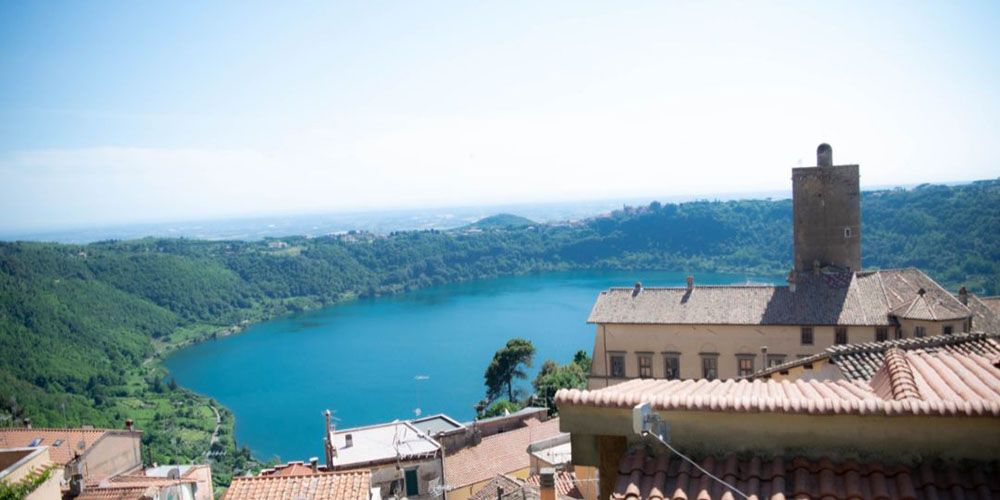
Here we are ready for the third stage, fifteen minutes by car from Velletri we find Lanuvio, a pretty village bordered by four circular towers that lends itself to short and pleasant walks. The largest and most well-preserved of the towers is the Torre Maschia, made of peperino blocks and symbol of the medieval village. Also called Torre di Porta Romana, it was also used as a prison and was part of the fourteenth-century castle, the tower also has an external walkway that can be visited.
The archaeological area of Lanuvio is worth a visit, you will be able to admire the remains of the Sanctuary of Giunone, a Latin, Etruscan and Roman divinity assimilated to Hera, the wife of Jupiter, the goddess of morning light. The sanctuary stands on San Lorenzo hill, which can be reached quickly on foot from the center. Worthy of note and not far from the archaeological area is the Parco delle Rimembranze, a memory of the original tram station, the terminus of the Rome - Velletri section. At the center of the circular square is the retractable fountain, good for cooling off and playing a little with the water.
Leaving Lanuvio, in a few minutes you will be in Genzano, famous for its homemade bread that has obtained the IGP mark characterized by a tasty contrast between a crunchy crust and a soft interior, and for the infiorata festival. A few more minutes by car along the lake and you will be in Nemi.
Nemi is a small village built on an overhanging rocky outcrop with a magnificent view of the lake. Our itinerary can start from Piazza Umberto I from where you can enjoy a superb panorama of the homonym lake, so lose yourself in the small, picturesque and evocative alleys of the historic center. Then head towards the sanctuary of the Santissimo Crocefisso di Nemi, dated 1637, the church took this name when a friar returning from Palestine with a piece of wood taken from Mount Calvary used it to carve a crucifix of natural dimensions, tradition has it that before completing his face the friar collapsed with tiredness and when he woke up he found the finished wooden crucifix completed. This is still today a destination frequented by many pilgrims.
In Nemi you will find many fountains, including the Fountain of the goddess Diana, that of the Lions and the Fountain of the Gorgon. At the end of the village, passing an arch you will find the Terrace of Lovers, inaugurated in February 2015, it takes its name from the mythological loves that are said to have taken place in these scenarios, in particular those between Diana and Virbio and between Numa Pompilius and the nymph Egeria. Not far from this terrace starts a bumpy road which, if you are brave enough to follow it, will take you to the shores of the lake, which is almost entirely suitable for swimming.
Fourth stage: Ariccia, Albano and Castel Gandolfo
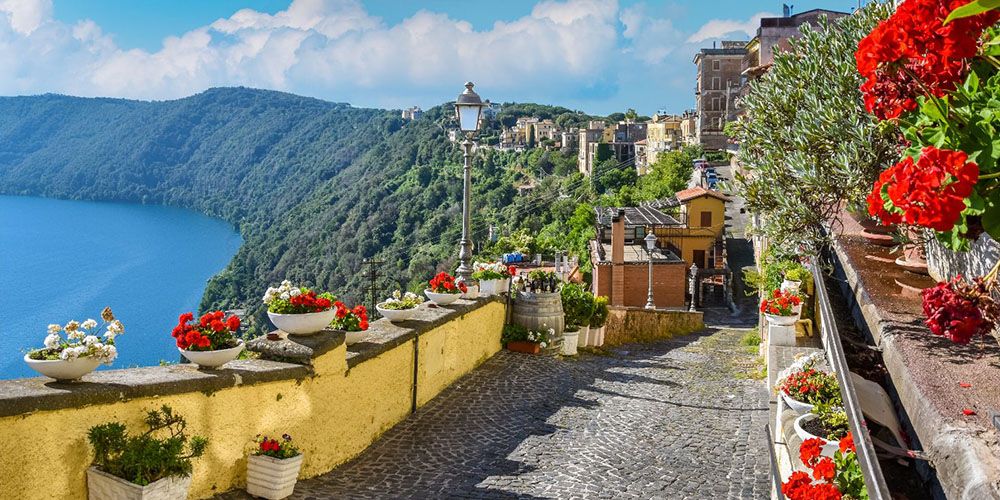
Leaving Lake Nemi behind you, continuing on the Via dei Laghi, stop in Ariccia, a hospitable village full of inns and taverns, famous for its porchetta. Formerly called Riccia, or La Riccia, in the local jargon over time it has turned into Ariccia. The historic center of this town is very small, but it deserves a stop not only for culinary reasons. Among the main attractions is the monumental bridge, three orders of arches with a height of 312 meters, built at the behest of Pope Gregory XVI. Heavily bombed in 1944, it was rebuilt in 1967. Entering the city, head towards Piazza della Corte, where the long Palazzo Chigi stands out, the building still retains its original furnishings and can be visited. The building is also known for its vast Parco Chigi, full of fountains and artifacts, designed under the guidance of Bernini who in the 1600s designed the reorganization of the town. Also, in Piazza della Corte, do not miss the Locanda Martorelli, this place was a regular stop on the 19th-century grand tour of Italy, artists such as Turner and Corot stayed here. Also, in Ariccia there are two entrance and exit gates of the city, respectively Porta Romana and Porta Napoletana.
From Ariccia in just three minutes by car you will arrive in Albano. There are many things to see in this town. All the archaeological remains are of particular interest: the Roman amphitheater, the cisterns, the catacombs of San Senatore, Porta Pretoria, the Baths of Caracalla, the sepulcher of the Orazi and Curiazi, the sepulcher of Pompeo Magno, the imperial villa, ending with the Museum of Second Parthian Legion. A tour of the town must also include the Cathedral of San Pancrazio dedicated to the patron saints of Albano, the convent and church of the Capuchins and that of San Paolo.
Our tour of the Castelli Romani sees Castel Gandolfo as the last stop, perhaps the most beautiful and elegant of the Roman castles, chosen by the Popes as a summer residence and a well-kept town. From the town center you can go down to the shore of Lake Albano, also known as Lake Castel Gandolfo, and have a nice swim.
Our walk to Castel Gandolfo starts from the city center: Piazza della Libertà. It is on this square that the main attractions overlook, first the Pontifical Palace, which has always been used as the summer residence of the Popes, the tradition however was not continued by the current Pope who made the residence a museum open to the public.
Attached to the Papal Palace are the Pontifical Gardens (55 hectares) and the papal villas (Villa Cybo and Villa Barberini). If you want to visit, we advise you to book in advance. Still in Piazza della Libertà we suggest you go and see the first mailbox in the world, it was opened in 1820. Always in the same square is the seventeenth-century fountain by Bernini. If you happen to pass by these parts in August, take note that at the end of the month, there is the famous water procession in honor of the Madonna del Lago.
Our circular route from Frascati to Castel Gandolfo passing through the park of the Castelli Romani and Velletri is finished. To return to Rome you can take the Via Appia.
About the author
Written on 27/06/2023

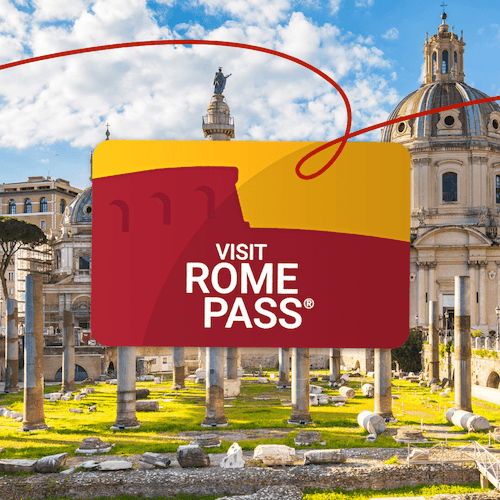
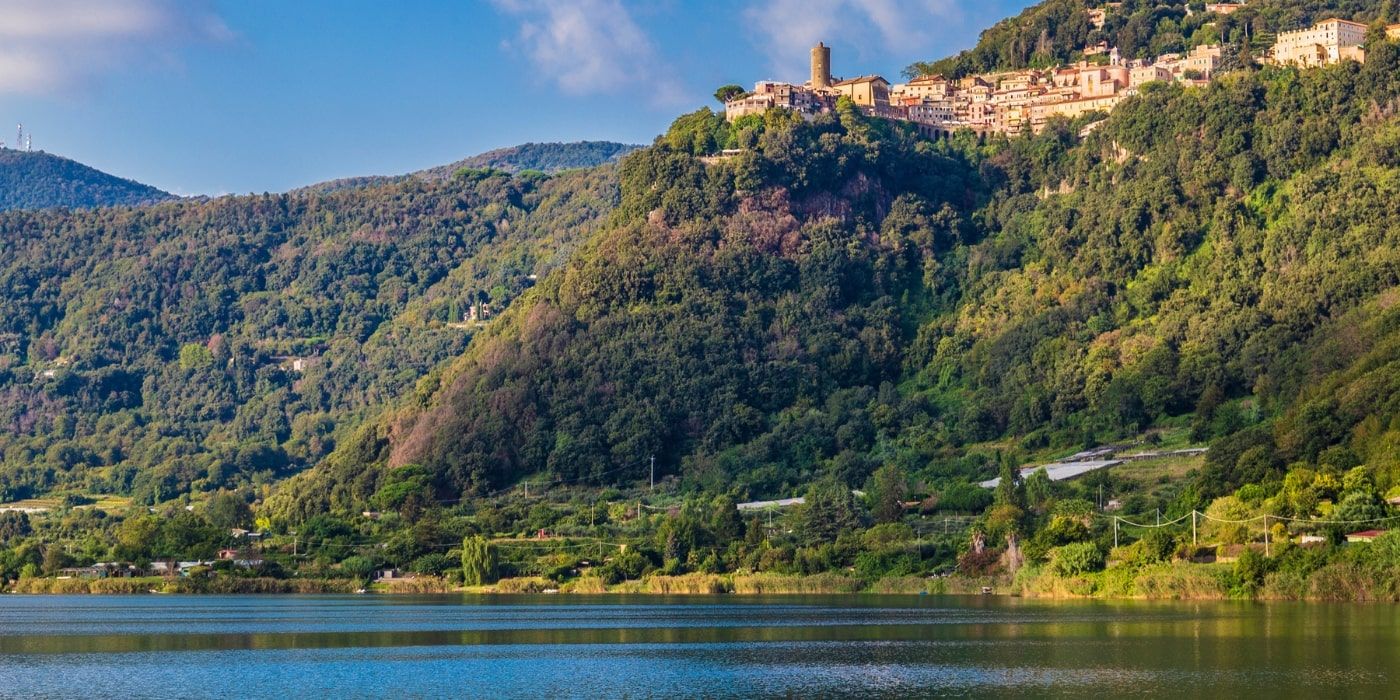

Chiarastella Campanelli
An evocative journey through the villages of the Castelli Romani, to discover the beauties, curiosities and delicacies of the towns on the Colli Albani.